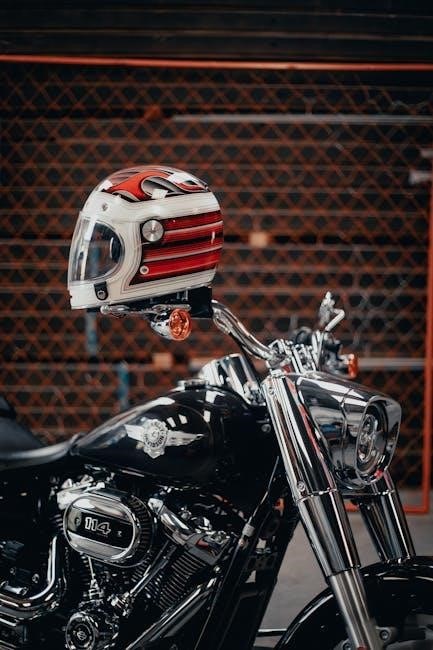Finding the perfect Harley-Davidson helmet size is crucial for safety, comfort, and style. This guide provides a comprehensive overview, including how to measure your head, size charts for men and women, and common mistakes to avoid.
With practical advice and detailed information, you’ll be able to choose the right helmet with confidence. Whether you’re a seasoned rider or a newcomer, this guide ensures a secure and comfortable fit, essential for every journey.
Importance of Proper Helmet Fit
A proper-fitting helmet is essential for safety, comfort, and performance while riding. A helmet that is too tight can cause discomfort and fatigue, especially on long rides, while one that is too loose may not stay in place during sudden movements.
Correct fit ensures optimal protection in the event of an impact, as the helmet distributes force evenly. Improper fit can compromise visibility, aerodynamics, and overall riding experience.
Harley-Davidson helmets are designed to provide a snug, secure fit, but sizing varies between models. Understanding your head shape and measuring accurately are critical to selecting the right size.
A well-fitting helmet enhances safety, reduces distractions, and allows riders to focus on the road ahead. Always prioritize proper fit to maximize protection and comfort.

How to Measure Your Head for a Harley Davidson Helmet
Use a flexible tape measure to circle your head one inch above the eyebrows. Ensure the tape is snug but not too tight, avoiding any indentations or overlaps. This ensures accurate sizing for a safe, comfortable fit.
Step-by-Step Measuring Guide
To measure your head for a Harley-Davidson helmet, start by locating the widest part of your head, typically about one inch above your eyebrows and ears. Use a flexible tape measure or a string to wrap around this area, ensuring it’s snug but not overly tight.
Next, take note of the measurement in centimeters or inches. If using a string, mark the point where it overlaps and measure the length with a ruler. Compare this measurement to the Harley-Davidson size chart to find your corresponding helmet size.
Double-check the fit by ensuring the helmet sits level on your head, with no pressure points. If your measurement falls between sizes, consider sizing down for the best fit. Accurate measurement ensures safety, comfort, and optimal performance while riding.
Understanding Head Shape and Size Variations
Head shapes and sizes vary significantly among individuals, which is why Harley-Davidson helmets are designed to accommodate these differences. Most heads fall into three main categories: Intermediate Oval, Round Oval, and Long Oval. Intermediate Oval is the most common and suits a wide range of riders. Round Oval heads are slightly wider, while Long Oval heads are longer front-to-back.
Harley-Davidson helmets are crafted to fit these variations, offering a comfortable and secure fit for different head shapes. The size charts are based on head circumference measurements, ensuring accuracy. However, it’s important to consider personal comfort and how the helmet sits on your head. If your measurement falls between sizes, sizing down is often recommended for optimal fit. Understanding your head shape and size is crucial for selecting the right helmet, ensuring both safety and comfort on the road.
Harley Davidson Helmet Size Chart

Harley-Davidson helmets are available in sizes XS to 2XL, catering to diverse head sizes. The chart provides precise measurements in centimeters for men and women, ensuring a perfect fit. Detailed size breakdowns are included for accuracy.
Men’s Helmet Size Chart

Harley-Davidson men’s helmets are available in sizes ranging from XS to 2XL, ensuring a tailored fit for every rider. The size chart is based on head circumference measurements in centimeters, providing a precise guide for selection. Below is the detailed breakdown:
- XS: 53-54 cm
- S: 55-56 cm
- M: 57-58 cm
- L: 59-60 cm
- XL: 61-62 cm
- 2XL: 63-64 cm

These measurements ensure a secure and comfortable fit, essential for safety and riding performance. Always consider trying the helmet on if possible, as head shapes can vary slightly. Harley-Davidson helmets also come with a one-year limited warranty, adding peace of mind to your purchase.
Women’s Helmet Size Chart
Harley-Davidson offers a range of sizes for women’s helmets, ensuring a perfect fit for every rider. The size chart is based on head circumference measurements, providing a clear guide for selecting the right helmet. Below is the detailed breakdown:
- XS: 53-54 cm
- S: 55-56 cm
- M: 57-58 cm
- L: 59-60 cm
- XL: 61-62 cm
- 2XL: 63-64 cm

These measurements ensure a secure and comfortable fit, essential for safety and riding performance. Harley-Davidson helmets are designed with women’s head shapes in mind, offering a stylish and protective option. The helmets also come with a one-year limited warranty and a helmet bag for added convenience. Always consider trying the helmet on if possible, as head shapes can vary slightly. With these sizes, women can enjoy a tailored fit that combines comfort, safety, and style for every ride.

How to Choose the Right Helmet Size
Ensure a proper fit by measuring your head accurately and consulting the size chart. If between sizes, opt for the smaller one for a snug, secure fit. Try the helmet on if possible, as padding may compress over time, ensuring comfort and safety.
Interpreting the Size Chart
Interpreting Harley-Davidson’s helmet size chart involves matching your head measurement to the corresponding size. Measure around your head one inch above the eyebrows, ensuring the tape is level and not too tight. Use the chart to find your size, with options ranging from XS to 2XL. If your measurement falls between two sizes, choose the smaller size for a secure fit. The chart provides head circumference in centimeters and corresponds to sizes, ensuring accuracy. Proper interpretation is key to a comfortable and safe riding experience, as an ill-fitting helmet can compromise protection and visibility. Always refer to the official Harley-Davidson size guide for the most accurate information, and consider trying the helmet on if possible to confirm the fit.

What to Do If You’re Between Sizes

If your head measurement falls between two sizes, it’s important to choose the smaller size for a secure fit. A helmet that is too loose may not provide adequate protection, while one that is too tight can cause discomfort. Use the size chart as a guide, but also consider trying the helmet on if possible. If you’re unable to try it on, opt for the smaller size, as helmets often break in slightly over time. Additionally, check if the helmet has adjustable padding, which can help customize the fit; If you’re still unsure, consult with a Harley-Davidson dealer or expert to ensure the best possible fit. Remember, a proper-fitting helmet is essential for both safety and comfort, so take the time to get it right.
Your safety and riding experience depend on it.

Common Mistakes When Selecting a Helmet Size
Ignoring head shape and not trying the helmet on are common errors. A poor fit can compromise safety and comfort. Always measure correctly and test the helmet if possible.
Don’t guess your size.
Ignoring Head Shape
One of the most common mistakes when selecting a helmet is ignoring the natural shape of your head. Harley-Davidson helmets, like many others, are designed to fit various head shapes, including round, oval, and intermediate.
Each shape requires a specific fit to ensure comfort and safety. If your helmet doesn’t match your head shape, it may cause pressure points, discomfort, or even poor visibility while riding.
For example, a round-shaped head may find a helmet designed for an oval shape too tight at the temples, leading to discomfort on long rides. Conversely, an oval-shaped head in a round helmet might feel loose at the crown.
Harley-Davidson offers a range of helmets catering to different head shapes, so it’s crucial to identify yours before making a purchase. This ensures optimal fit, safety, and riding enjoyment. Always consider head shape alongside size for the best results.
Not Trying the Helmet On
Not trying the helmet on is a critical mistake that can lead to an ill-fitting helmet. Even with precise measurements, the actual fit may vary due to differences in padding, design, and head shape.
A proper fit ensures safety, comfort, and visibility while riding. A helmet that is too tight can cause discomfort or pressure points, while one that is too loose may shift during movement, compromising protection.
Always try the helmet on before purchasing, if possible. Check how it fits around the cheeks, forehead, and back of the head. Ensure there are no gaps and that the helmet doesn’t move when you shake your head.
Additionally, wear the same type of clothing you’d wear while riding, as this can affect the fit. If purchasing online, refer to customer reviews or size charts for guidance. Remember, a well-fitting helmet is essential for both safety and riding enjoyment.